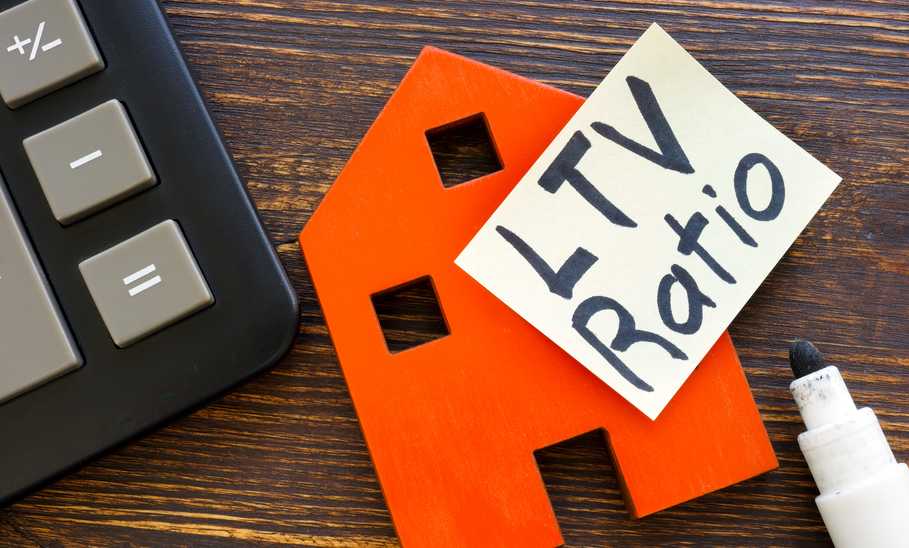What Is a Loan-to-Value Ratio and How Does It Work?

Our evaluations and opinions are not influenced by our advertising relationships, but we may earn a commission from our partners’ links. This content is created by TIME Stamped, under TIME’s direction and produced in accordance with TIME’s editorial guidelines and overseen by TIME’s editorial staff. Learn more about it.
When you apply for a new mortgage, refinance an existing mortgage, or take out a home equity loan or home equity line of credit (HELOC), your lender will consider numerous factors during the approval process. Your loan-to-value (LTV) ratio is one of them. It will not only influence your lender's approval decision; it will also play a crucial role in determining the terms of your loan.
Let’s explore exactly what an LTV ratio is, how it’s calculated, and the requirements lenders will have depending on the loan for which you’re applying.
Even though your LTV ratio is just one of many factors a lender will consider, it’s one of the most important. The ratio is the amount you plan to borrow compared with the home’s value calculated as a percentage.
As we’ve already said, your LTV ratio is used to determine not only whether you’ll get a loan but also its size and interest rate. Lenders ideally want a lower LTV ratio because it means that they’re taking on less risk.The lower your ratio, the better your chance of being approved for a loan and the less you’ll spend on borrowing costs.
Having a high LTV ratio means that you have little equity in your home. This could spell trouble if housing prices decline. You could end up underwater on your mortgage, which means owing more on your mortgage than your house is worth.
A high LTV ratio slows the process of building equity in your home. This is because mortgage payments are calculated based on an amortization schedule. Part of the payment is allocated to your principal balance, and the rest goes toward interest. Early in your mortgage term, when the balance is highest, more of your payment goes toward interest. However, if you provide a larger down payment, reducing your LTV ratio, more of your monthly payment will go toward the principal, helping you build equity faster.
Calculating your LTV ratio is simple. Start by figuring out how much you need to borrow. This can be done by subtracting your down payment from the home’s value. Take that figure and divide by the home’s value, multiply the result by 100, and you have your LTV ratio..
((Home Value - Down Payment) ÷ Home Value) x 100 = LTV
Here’s an example. Suppose you’re purchasing a home valued at $450,000 and kick in a $60,000 down payment. In such a case you’ll need to borrow $390,000. The LTV ratio would be calculated as follows.
(($450,000 - $60,000) / $450,000) x 100 = 86.67%.
In general a good LTV ratio is 80% or lower. Anything above that will require you to pay mortgage insurance, which will increase your monthly mortgage payment.
Mortgage lenders use your LTV ratio in a few ways. The most important is in deciding if you’re a suitable borrower. However, it’s not the sole determinant of that; other factors, such as your credit score and income, also come into play.
Lenders will also use your LTV ratio to determine your interest rate. You likely won’t qualify for the best rate unless your ratio is at least 80% or below, even though you can get some loans with ratios as high as 97% or even 100%.
Depending on the loan for which you’re applying, there are certain LTV ratio requirements you’ll need to meet.
| Loan Type | LTV ratio needed |
|---|---|
Conventional without private mortgage insurance | 80% or less |
Conventional with private mortgage insurance | 97% or less |
FHA | 96.5% or less |
VA | 100% or less |
USDA | 100% or less |
Each lender will have different down payment requirements when applying for a conventional loan. However, some will allow a down payment as low as 3%, which would be a 97% LTV ratio. Still, it’s important to remember that anything higher than an 80% LTV ratio on a conventional loan will require private mortgage insurance, increasing your monthly mortgage payment.
FHA loans, which are backed by the Federal Housing Administration, can be had with a down payment as low as 3.5% (96.5% LTV ratio). However, if you have a credit score ranging from 500 to 579, you must use a 10% down payment (90% LTV ratio).
VA loans are backed by the United States Department of Veteran Affairs and available to active military and veterans without a down payment (100% LTV ratio) as long as the sales price isn’t higher than the home’s appraised value.
The United States Department of Agriculture backs USDA loans, which are available to individuals who meet certain lending requirements. You don’t need a down payment (100% LTV ratio) to get these loans either.
There are two ways to lower your LTV ratio.
If you’re applying for a home-equity loan or HELOC—or you’re refinancing your current mortgage—the lender will look at your combined loan-to-value (CLTV) ratio. This is the total debt on the property (a combination of first and second mortgages) divided by the home’s value expressed as a percentage.
LTV and CLTV ratios are similar on the surface, but they differ in how they are calculated. Your LTV ratio is based solely on your first mortgage; however, your CLTV ratio is calculated based on the balances of both your first and second mortgages.
For example, let’s assume you’re attempting to refinance your first mortgage, which has a balance of $250,000, as well as your home-equity loan, which has a balance of $40,000. If your home's value is $450,000, your CLTV ratio would be:
($250,000 + 40,000) ÷ 450,000 = 64.4%.
Understanding your LTV ratio is important for anyone applying for a mortgage. The lower it is, the greater your chance of being approved and getting a better interest rate.
Having an LTV ratio of 80% or less means you’ll likely receive a lower interest rate. You’ll also be able to avoid paying mortgage insurance, which will lower your monthly mortgage payments.
Most lenders perceive a low LTV ratio as having less risk. This is why they often offer lower interest rates for people with an LTV of 80% or below.
Lenders use a number of other factors when determining the terms of your mortgage, including your credit score, debt-to-income (DTI) ratio, and employment history.
The information presented here is created by TIME Stamped and overseen by TIME editorial staff. To learn more, see our About Us page.



